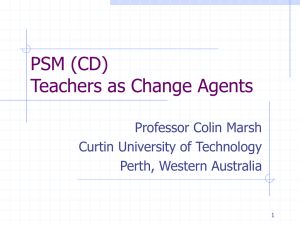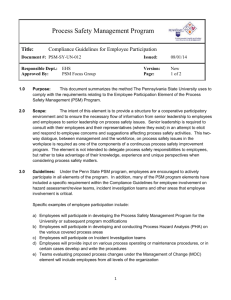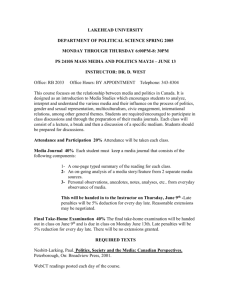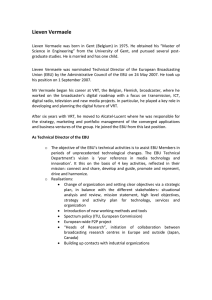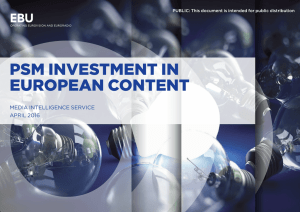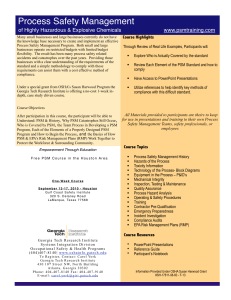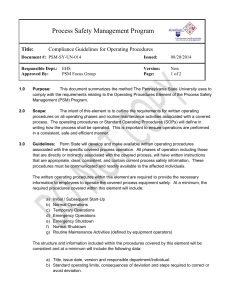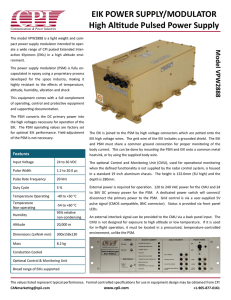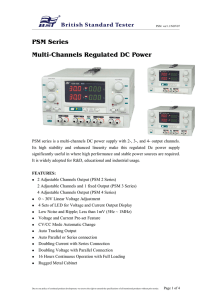PUBLIC SERVICE MEDIA REQUIREMENTS IN DISTRIBUTION
advertisement
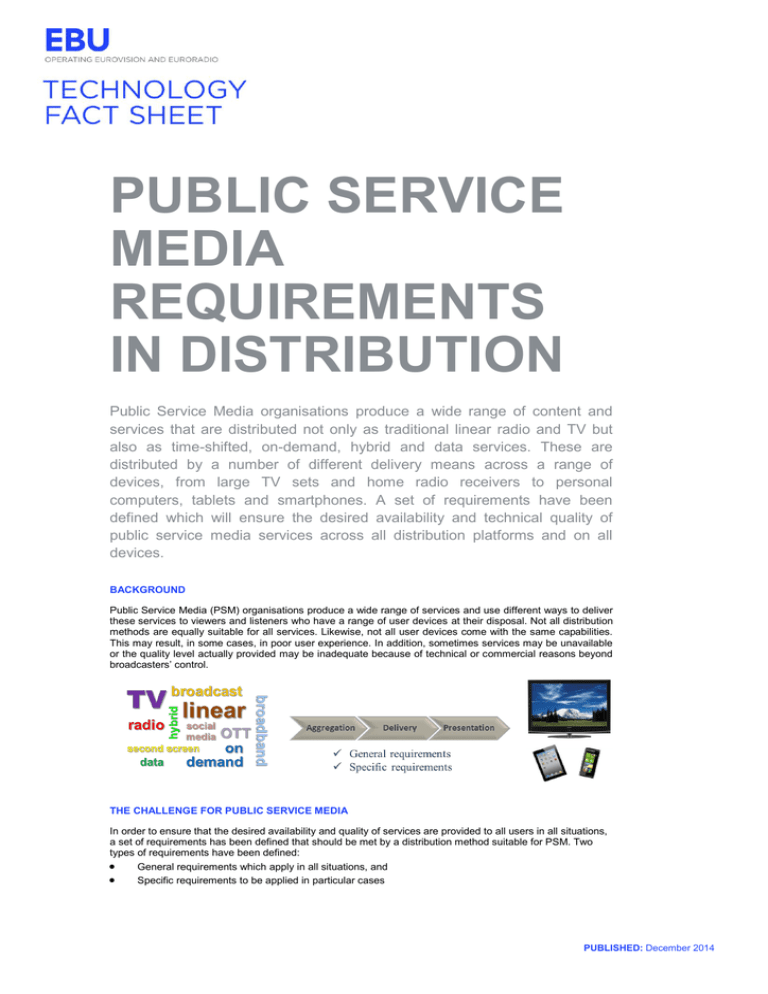
PUBLIC SERVICE MEDIA REQUIREMENTS IN DISTRIBUTION Public Service Media organisations produce a wide range of content and services that are distributed not only as traditional linear radio and TV but also as time-shifted, on-demand, hybrid and data services. These are distributed by a number of different delivery means across a range of devices, from large TV sets and home radio receivers to personal computers, tablets and smartphones. A set of requirements have been defined which will ensure the desired availability and technical quality of public service media services across all distribution platforms and on all devices. BACKGROUND Public Service Media (PSM) organisations produce a wide range of services and use different ways to deliver these services to viewers and listeners who have a range of user devices at their disposal. Not all distribution methods are equally suitable for all services. Likewise, not all user devices come with the same capabilities. This may result, in some cases, in poor user experience. In addition, sometimes services may be unavailable or the quality level actually provided may be inadequate because of technical or commercial reasons beyond broadcasters’ control. THE CHALLENGE FOR PUBLIC SERVICE MEDIA In order to ensure that the desired availability and quality of services are provided to all users in all situations, a set of requirements has been defined that should be met by a distribution method suitable for PSM. Two types of requirements have been defined: General requirements which apply in all situations, and Specific requirements to be applied in particular cases PUBLISHED: December 2014 General requirements General requirements address not only technical issues but also regulatory, market and business-related aspects relevant for PSM organisations and apply across all distribution options. The general requirements are: Ability to provide content free-to-air. Deliver PSM content to the public without blocking or filtering the service offer (i.e. no gate keeping). Content and service integrity: No modification of the PSM content or service by third parties. For example, TV content and additional services (e.g. subtitles, HbbTV etc.) must be displayed on screen, unaltered and without unauthorised overlays. Quality of service (QoS) to be defined by the broadcaster, including availability of a network, robustness, up-time, and reliability. QoS for each user shall be independent of the size of the audience. PSM shall not be subject to discrimination compared to equivalent services. Geographical availability of the service (e.g. national, regional, local) is to be defined by the broadcaster. A distribution method needs to support at least a minimum service offer (e.g. a minimum number of programmes) as defined by the broadcaster. Ease of use: Straightforward accessibility and prominence of the PSM offer. Low barrier for access to PSM content and services for people with disabilities (e.g. subtitles, audio description and signing). Ability to reach audiences in emergency situations. Specific requirements Depending on the service, user device and distribution method, a set of specific requirements should be defined and fulfilled, in addition, to the general requirements. Examples could include technical parameters (e.g. data rates, bit error rate, latency) and peak size of the concurrent audience. WHAT IS THE EBU DOING? A high-level analysis of the relevant use cases and the assessment of the available options for the distribution of broadcast services are given in EBU Technical Report 026. The work continues in the Strategic Programme on Future Distribution Strategies (FDS). FIND OUT MORE EBU FDS group https://tech.ebu.ch/groups/fds Technical Report 026 https://tech.ebu.ch/docs/techreports/tr026.pdf PUBLISHED: December 2014
